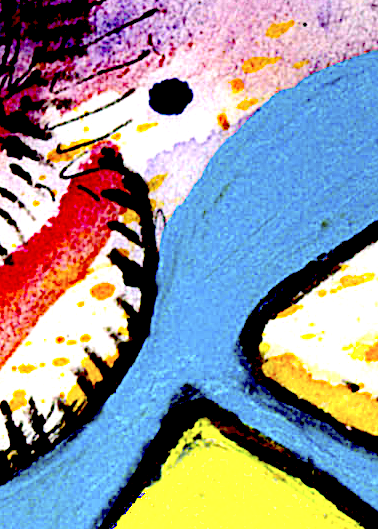IMPROTECH Paris - Αθηνα 2019
Detailed program
Thursday Sept. 26
Friday Sept. 27
Saturday Sept. 28
Sunday Sept. 29

Thursday sept 26 - Opening
Onassis STEGI, 19:00 - 22:30
Opening Keynote and concert
19:00 - 20:00
Opening Words
Anastasia Georgaki, Christos Carras, Gérard Assayag, Marc Chemillier
Opening Keynote Lecture: Improvisation with Technology as a Way of Life: Listening for Freedom with Arnold Davidson
George Lewis (Columbia University)
I met the American philosopher Arnold I. Davidson in July 2007 at the conference “Ruptures: Music, Philosophy, Science, and Modernity,” co-organized by Davidson and the composer Martin Brody and held at the Max-Planck-Institut für Wissenschaftsgeschichte in Berlin, at which I presented a performance of my interactive computer music work, Voyager. Topics such as ethics, moral perfectionism, social responsibility, intelligibility, and freedom had long been central to Davidson’s thought, but during the post-concert discussion, he introduced a new understanding of these issues at the nexus of interactive technology and improvisation. Since his ideas in this area have rarely been published, this talk draws upon transcripts of public dialogues on interactive computer improvisation which we held between 2008 and 2012. Davidson’s work on improvisation points the way to how the philosophy of music might importantly occupy the center of the intellectual picture, drawing upon music to illuminate larger human ways of knowing and doing beyond the purview of the arts, in ways that the field has only belatedly engaged. This talk takes up the mantle of the radical sound art collective Ultra-red, in posing the question: “What is the sound of freedom?”
20:30 - 22:30
Concert #1
Evan Parker, Matt Wright, Peter Evans, Mark Nauseef
Trance Map+
Saxophones, live electronics, trumpet, percussion
Michelle-Agnes Magalhaes, Frederic Bevilacqua & guests
In good company
for 2 pianists, guest musicians and webaudio devices
Georg Hajdu
Just Her - Jester - Gesture
For augmented kalimba (played by Lin Chen) and live electronics
Raphael Imbert, Benjamin Lévy, Mourad Benhammou
A.I. Swing
Saxophones, OMax 5 computer system, Drums
Dimitri Vassilakis with the students from the University of Athens
Guests : Anastasia Georgaki, Raphael Imbert and Benjamin Lévy
Saxophones, guitars, vocals, accordion, live electronics, OMax 5 and DYCI2 computer system

Evan Parker, Matt Wright, Peter Evans, Mark Nauseef
Trance Map+
Evan Parker : saxophones
Matt Wright: electronics
Peter Evans: trumpet
Mark Nauseef: percussion
Evan Parker, saxophonist and one of the founding fathers of the European improvised music scene since the late 1960s has chosen to assemble a version of Trance Map+, the group he co leads with Matt Wright, which adds percussionist Mark Nauseef and trumpetist Peter Evans to make a new quartet. Both Mark and Peter have played in other larger combinations but this will be a debut for this specific combination. For the occasion they will be composing site specific new music by improvisation. Evan Parker and Matt Wright met in 2008 and out of their first studio sessions developed Trance Map, an album of over an hour that mixes field recordings, samples from cassettes, turntable scratching and the live processing of Evan's relentlessly evolving saxophone lines. Since that time the project has developed to include live events across Europe, often involving (Trance Map+) guest performers such as Toma Gouband, Peter Evans, Hannah Marshall and Barry Guy. A US version of the group (featuring Evan Parker, Matt Wright, Mark Nauseef, Adam Linson and Ned Rothenberg) performed at the Big Ears Festival in Knoxville in late March 2019. Trance Map+ Live in Nikkelsdorf (featuring Evan Parker, Matt Wright, Spring Heel Jack and Adam Linson) will be released on Intakt in summer/autumn 2019. http://www.matt-wright.co.uk/trance-map
Michelle Agnes Magalhaes
In good company
for 2 pianists, guest musicians and webaudio devices
Michelle Agnes Magalhaes, composer and pianist
Frédéric Bevilacqua, researcher, webaudio systems
Conceived as a small musical theatre of “interactions”, In good company is a cycle of small pieces. The cycle is organised as an organic living form that progressively expands. It’s built from minimal individual interaction (fingers - piano keys) towards more complex collective interaction between performers and various objects. Its multilayered structure includes visual, sound, gestural and environmental elements. The score is actually a proposition for games that pushes the performers to try new things, take risks and surprise themselves. In addition to instrumental sounds, they also manipulate cell phones, hacking these objects that intermediates in our everyday life much of the interaction with the others. Here, our main interest is to continuously operate shifts in changing rules, eventually creating a large form. This piece was designed with the support of the VERTIGO project as part of the STARTS program of the European Commission, based on technological elements from BeCoMe.
Georg Hajdu
Just Her - Jester - Gesture
for augmented kalimba and live electronics
Georg Hajdu, composer, computer & live electronics
Lin Chen, augmented kalimba
Just Her – Jester – Gesture is a composition in Bohlen-Pierce tuning for augmented kalimba and electronics written in 2010. It was premiered on occasion of my 50th birthday on June 21, 2010 at the EMS conference hosted by the Shanghai Conservatory’s Electro-Acoustic Music Center (EAMC).
The piece is in three parts:
- Just Her – a (fully notated) kalimba solo without electronics
- Jester – a (fully notated) duet between kalimba and computer running the real-time algorithmic composition/improvisation software DJster
- Gesture – an improvisatory part in which the kalimba player uses gestures freely to control the computer, alternating with short interspersed solo passages.
Just Her – Jester – Gesture requires a Hugh-Tracey alto kalimba. This instrument ordinarily covers the diatonic range from g3 to g5 (c4 being middle C). By nudging each of the 15 tines, the tuning can be adjusted to the Bohlen-Pierce scale. Kalimbas are characterized by an alternating “centrifugal” layout of the tines, which allows a scale to be played by both hands in an outward alternating motion. I designed a suitable type of notation to capture the logic of this layout and used MaxScore to implement it. MaxScore is a notation program, developed by Nick Didkovsky and myself, capable of both displaying and playing back music in non-standard tuning.
A wireless controller attached to the back of kalimba with a strip of velcro drives a real-time generative computer process accompanying the performance of the kalimba player. The engine I used is a Max patch called DJster and is based on Clarence Barlow’s legacy program AUTOBUSK. DJster generates notes, which are routed to a playback device using resonance models for synthesis. The ResAn program (part of IRCAM’s Diphone package) was used to analyze the resonances of a regular kalimba tone, a knock on its body as well as the sounds of wiping across the tines and the body
Just Her – Jester – Gesture will be performed by Hamburg-based percussionist Lin Chen.
Raphael Imbert, Benjamin Lévy, Mourad Benhammou
A.I. Swing
Raphaël Imbert, saxophones, composition
Benjamin Lévy, OMax 5 computer system
Mourad Benhammou, drums
Following a collaboration started in 2009, Benjamin Lévy and Raphaël Imbert now offer a new duo, which is currently the subject of an artistic research residency at Ircam, augmented in trio for this concert by their companion, drummer Mourad Benhammou. The objective: to find a common and new musical language between the OMax improvisation software and the heritage and creativity of jazz, which is discovered in real time, makes sense and swings. Because OMax swings, new technologies groove and artificial intelligence is having fun, under the guidance of our two protagonists who are keen on experiments, research, improvisation and History. Louis Armstrong, Coleman Hawkins, Mary Lou Williams, John Coltrane, Alan Lomax's work songs become innovative contemporary objects, while the latest technology illuminates the musical heritage in a playful and experimental way. The same improvised gesture thus unites the saxophone and the computer, the past and the future, jazz and contemporary music, for a specific research that is also an arithmetic celebration and a sound laboratory.
Dimitri Vassilakis with the students from the University of Athens
Guests : Anastasia Georgaki, Raphael Imbert and Benjamin Lévy
Dimitri Vassilakis, saxophones, midi sax, vocals, group coordinator
Tilemachos Mousas, guitar, midi guitar
Nastazia Beikof, vocals
Dimitris Smailis, guitars, programming
Natalia Kotsani, vocals, programming
and
Anastasia Georgaki, accordion
Raphael Imbert, saxophones
Benjamin Lévy, OMax 5 computer system
Dimitri Vassilakis and his students from the Master Jazz and New technologies at the National and Kapodistrian University of Athens (NKUA) will give a live performance, improvising and interacting with the OMax 5 and the DYCI2 computer systems, including poetry and original compositions. This new master course under Anastasia Georgaki's Laboratory of Music Acoustics and Technology (LMAT), is linking Jazz with the latest reseazrches and developments in sound and music technologies. It marks an important innovation for the Greek academic and educational field. http://en.labmat.music.uoa.gr The students perform in different ensemble settings that play regularly for the University and in festivals. Through a collaboration with Ircam (Jétôme Nika, Benjamin Lévy, Gérard Assayag) the students have been able to experiment and familiarize with cutting edge AI improvisation software such as omax and DYCI2, and they combine it with midi controllers and live prose, poetry and jazz performance.
